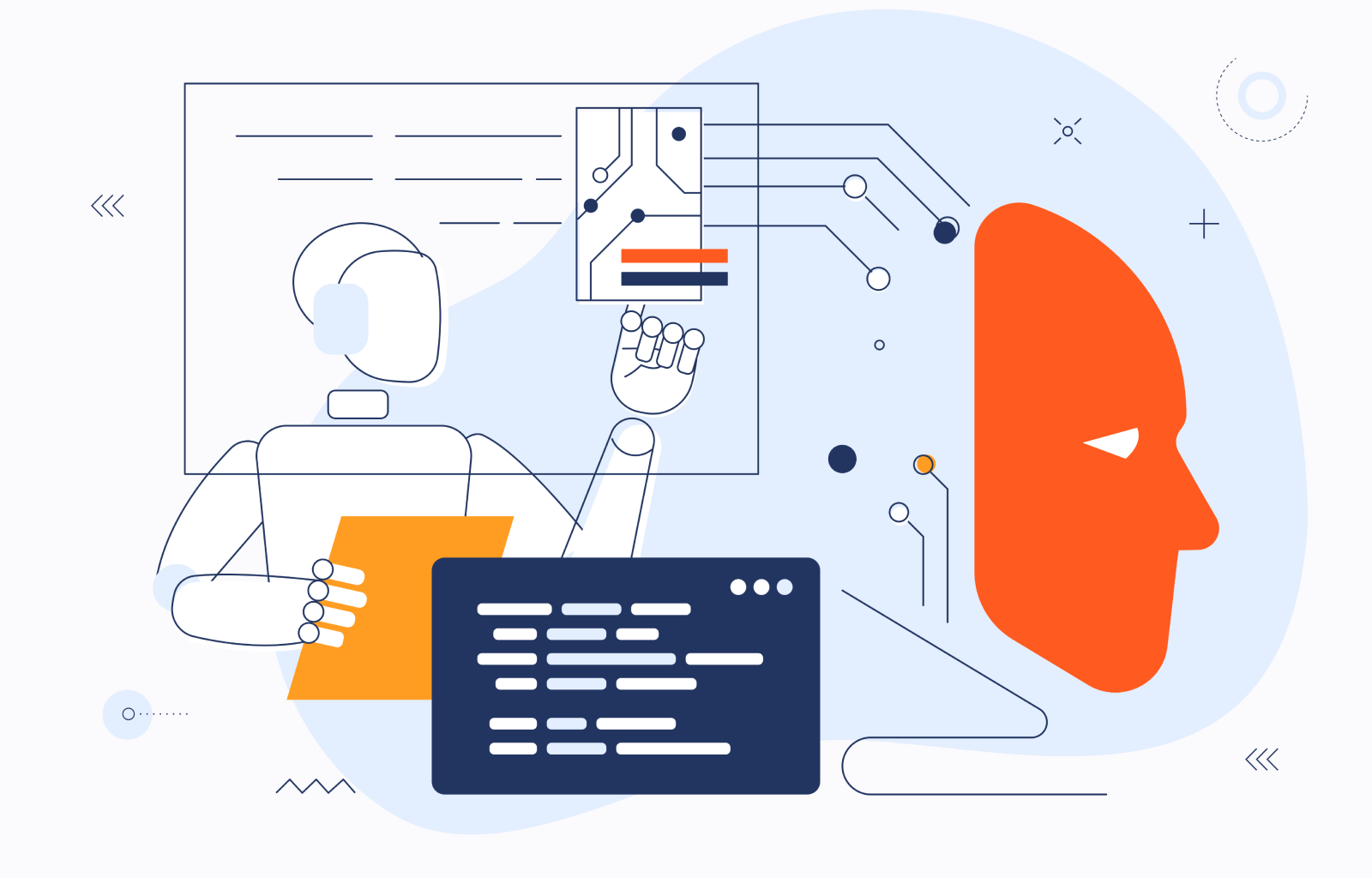Preparing Data for Machine Learning: What Businesses Need to Do Before Integrating Custom AI Solutions

With machine learning (ML), the results you get are highly dependent on what you put into during the training phase. While artificial intelligence (AI) is potentially very powerful, it also needs to be trained correctly if you want to get good results. That means giving it the right data. This step is a vital one, so it’s crucial to take machine learning data preprocessing seriously.
Why Data Preparation Matters for Machine Learning
Machine learning enables computers to make decisions or predictions based on data. However, without the right data prepared in the right way, even a great algorithm or model will struggle to produce accurate results. When you think about it, this makes sense. The machine can’t learn if the information you’re giving it isn’t accurate or complete.
Having the right data doesn’t just mean having a lot of data or even having high-quality data, though that is certainly a part of it. Not only does your data have to be accurate and comprehensive, but it also needs to be well-organized, properly structured, and reviewed in detail to reduce biases, properly handle outlying information, and overcome other issues.
Using the wrong data can be a significant disaster for your business. Companies today are spending large amounts of money on custom AI solutions and counting on these tools to make accurate predictions and assist with work in meaningful ways. If these tools are not given data that is correctly sourced and prepared, the results can be costly and hurt your company’s productivity as well as your reputation.
Key Steps for Data Preparation Before AI Integration
A key part of data preparation for AI is making sure all the information you provide is good quality. You can achieve this by taking the right steps before integration. Here are the steps you’ll want to make sure you follow.
- Data Collection. This is the first step of the process and one that can really make or break the reliability of your AI model and its outputs. Make sure that the data you collect is from relevant sources. This is what your entire AI model will be based on, so starting with good data puts you ahead right away. Make sure the data you collect is relevant for your use case and that it is checked for completeness and potential gaps are identified.
- Data Cleaning. Raw data is good, but it can often contain inaccuracies or inconsistencies. The more accurate your data, the more reliable your AI results will be. Therefore, it’s important to remove duplicates, fill in missing values, and address inconsistencies and outlying data before it skews the analysis.
- Data Structuring. Data shouldn’t just be clean, it should also be organized. If you’re working with data that has a fixed format (such as a database or spreadsheet), ensure that your data is structured in a way that makes it easy to search and analyze. This is a crucial difference when using structured vs unstructured data. For data that lacks a defined structure (such as emails or written articles), you may want to consider converting it into a structured format so that it can be used more effectively.
- Data Labeling. Certain data must be labeled to make it ready for AI training and analysis. For instance, images require relevant labels to assist with detection and classification, while sounds or phrases should be labeled when processing audio data. If your dataset handles natural language processing, the right data labeling for ML helps organize and classify certain documents or even specific sentences. These can be labeled based on topic or sentiment (positive, negative, or neutral), for instance.
- Data Integration. There are obviously many different data formats (spreadsheets, databases, text files, etc.) and converting these into a format that is most suitable for the AI model won’t just make it easier for the AI to understand, but it can also help with scaling. Getting your data into a format where it easily integrates with your model is crucial.
- Data Privacy & Compliance. Depending on your location, certain data privacy regulations (such as General Data Protection Regulation in the European Union or the California Consumer Privacy Act in California) may apply. Complying with these regulations is critical to avoid legal problems.
How an Experienced AI Development Partner Can Help with Data Preparation
Preparing your data is a critical step. In fact, many companies that create successful machine learning platforms and custom AI solutions spend a considerable percentage of the development process making sure their data is in the best possible shape. Of course, this is time consuming and requires specific knowledge and expertise, but it is worth it. Working with a professional can help.
AI developers don’t just understand the importance of data preparation, they also know what to look for. They have the knowledge needed to recognize when data quality issues will negatively affect predictions and insights and know the right steps to take to prevent these issues.
They will make recommendations for efficient cleaning and structuring while also using the right tools and workflows to get the job done. Plus, as your project scales or evolves, AI developers can ensure your models stay effective and continue to produce valuable output.
Correctly preparing data for machine learning will also speed up development time. Companies that succeed in the future are the ones that have great AI and machine learning solutions available today. If your company wants to keep up with your competition and take advantage of the benefits of machine learning technology, you don’t want to spend a bunch of time preparing your own data. Worse yet, doing machine learning data preprocessing yourself can result in mistakes or omissions that you may not notice until you’ve seen enough output to realize something’s wrong. At that point, you’ll need to head all the way back to the data preparation phase to fix your issue, setting you back a considerable amount of time.
Working with an experienced AI development partner can help you avoid these issues and missteps and achieve success more quickly and efficiently.
Key Data Preparation Challenges Before AI Integration and How to Address Them
In addition to the amount of work that goes into sourcing, cleaning, and otherwise preparing data, there are additional challenges with AI integration for businesses.
For instance, data may sit on different systems or be saved in different formats, making it difficult to merge or unify. There is also the potential for communication gaps between departments or teams at this point. Data stored in different locations and controlled by different business or technology units may be maintained differently, and without clear communication, mistakes can happen and that can drastically alter your output.
Another issue is that while you can manually label or classify data, this becomes incredibly costly and time consuming the more data you have. As your system starts to scale, it can quickly become overwhelming to properly label data without automation and expertise.
You will also need to be aware of possible biases in your data. Biases occur when the original data skews the AI algorithm during training. For instance, if your AI tool is designed to identify high performers in a company, you may train this tool with real-world examples of past high performers. However, due to historical biases, the data may be skewed towards certain demographics. This can reinforce stereotypes or ensure that future predictions rely too much on preexisting trends. These issues can cause your organization to miss out on high performers due to bias.
In addition, when it comes to regulatory compliance, it’s important to remember that privacy laws and regulations change often, so being on top of these changes is crucial to avoid legal issues when using AI integration for businesses.
Working with a trusted and experienced professional when doing data preparation for AI helps prevent these issues and saves your business considerable time and money.
FAQ
Since preparing data for machine learning is a lengthy and complicated process while also being a very important, it’s natural to have questions. Here are some of the most common.
While machine learning data preprocessing can be handled in house, there are many challenges, as mentioned. If you are implementing custom AI solutions at your company, working with a professional on data cleansing for machine learning and other data preparation can save you a lot of time and money.
The time needed for data preparation for AI depends on several factors, including the amount of data you have, how the information is stored, the type of data (for example, structured vs unstructured data), and many other factors. A professional can give you a clear idea of what to expect, whereas if you’re doing it on your own, you’ll be left guessing.
Data labeling is the process of annotating or tagging data with meaningful labels so it can be understood by a machine learning process. It’s an important aspect of data preparation for AI because it helps improve model accuracy, avoid bias, and, in general, help the algorithms make sense of the information it is given.
When it comes to business AI readiness, you’ll know that your data is fit for your AI project when it is accurate, complete, and consistent. You’ll need to check that the data is free of errors, inconsistencies, or outdated information, that steps are taken to reduce biases, and that all laws and regulations are followed. Working with a professional when preparing data for machine learning can help you know when you’re ready.
Contact us

